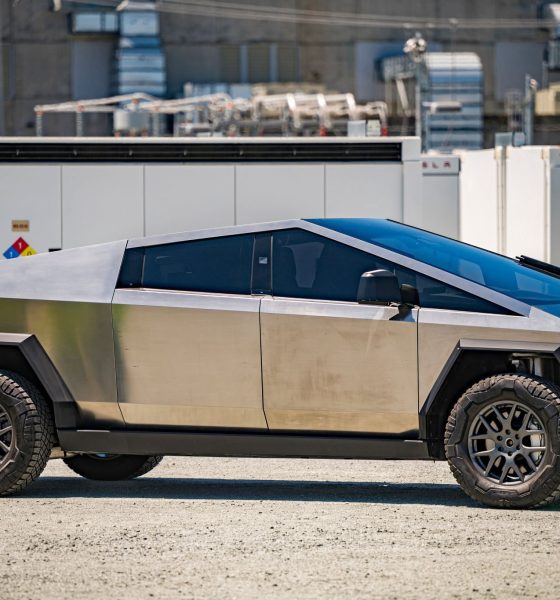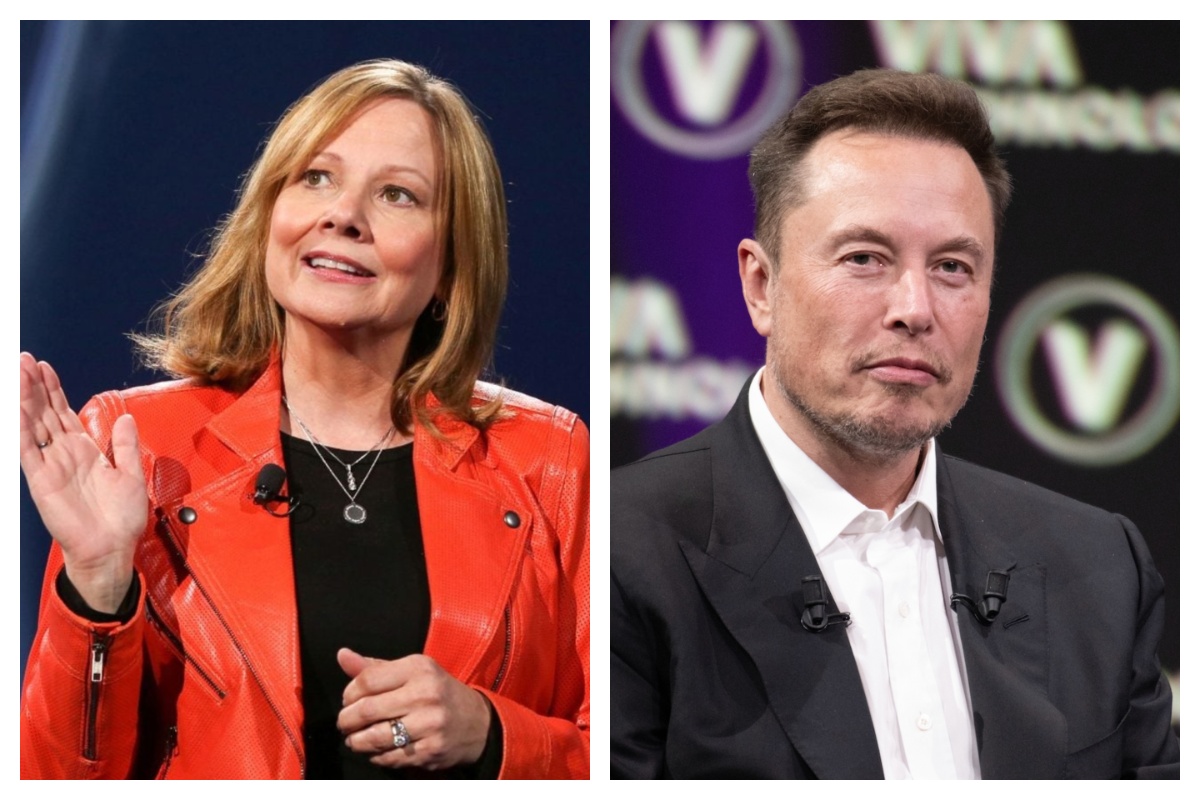

News
Tesla FSD is the answer to concerns about EVs’ possible “added” road risks
A recent article from Slate has brought up a rather interesting concern about electric vehicles and their wide adoption. Since electric cars tend to be a lot heavier than their combustion-powered counterparts, there is a nonzero chance that they could actually be more dangerous to pedestrians in the event of a crash. Tesla FSD could be the answer to these concerns.
There is an uncomfortable truth in the United States, and that is the fact that road fatalities are climbing. The National Highway Traffic Safety Administration (NHTSA), for one, noted that American road deaths soared during Q1 2022, rising 7% to 9,560 fatalities, the highest quarterly toll since 2002. The numbers are sobering, as they suggest that compared to pedestrians in countries like France and Canada, Americans are more than twice as likely to die in a crash.
There are quite a few factors behind these disturbing statistics, but one of them is believed to be the prevalence of overly large and heavy vehicles like full-size trucks and SUVs. While trucks are generally designed for work, full-sized pickups are now widely used by casual drivers to the point where some pickups barely see a day of legitimate work. SUVs are also all the rage. But while these vehicles could be quite safe for those inside them, they are a nightmare for the pedestrians that they might hit in the event of an accident.
As noted by Slate, one study actually found that the shift to SUVs over the past couple of decades ended up leading to over 1,000 more pedestrian deaths. Now, it should be noted that these large vehicles are already overly heavy with an internal combustion engine. When they are powered by a giant battery pack and equipped with electric motors, they become even heavier and a whole lot faster. The over-9,000-pound Hummer EV is the poster child of this, as the behemoth is capable of hitting highway speeds in about 3.3 seconds.
But inasmuch as these concerns are valid, heavy electric vehicles are only really just as dangerous as their drivers and safety features. Tesla has been making overly-heavy and ridiculously-fast sedans and crossovers for many years, yet its vehicles constantly rank among the safest on the road. This is due in no small part to the company’s active and passive safety features, which are standard on every Tesla that gets built at each of the company’s vehicle factories, both in the United States and abroad.
And coupled with Tesla’s FSD software, the risks for heavy electric vehicles are likely even less. Behind all the drama and smear campaigns targeted toward the advanced driver-assist system, after all, FSD is an incredibly cautious system that takes pedestrian safety as a top priority. Tests of Tesla FSD Beta releases have shown this time and time again — the system always keeps people around the car as safe as possible.
The use of systems like FSD Beta would likely be more widespread as the adoption of electric vehicles becomes more prevalent. Teslas would likely continue to be among the safest vehicles on the road, despite the company likely producing one of the heaviest vehicles on the market in the Tesla Semi. Fortunately, Tesla does seem to be open to the idea of having its software, like Autopilot, licensed to other automakers. This means that Tesla’s stellar safety systems could be rolled out to more vehicles, including those beyond the reach of the company’s products.
This, however, would require other automakers to admit that Tesla’s Autopilot and FSD are industry-leading solutions for pedestrian safety. Such an admission takes a lot of humility, and thus, is easier said than done. But the longer other automakers wait to roll out systems that are comparable to FSD or at least Autopilot, the longer pedestrians are exposed to an increasing number of electric vehicles that could indeed be too heavy and too fast in an accident.
Don’t hesitate to contact us with news tips. Just send a message to simon@teslarati.com to give us a heads up.

Elon Musk
GM CEO Mary Barra says she told Biden to give Tesla and Musk EV credit
“He was crediting me, and I said, ‘Actually, I think a lot of that credit goes to Elon and Tesla…You know me, Andrew. I don’t want to take credit for things.”

General Motors CEO Mary Barra said in a new interview on Wednesday that she told President Joe Biden to credit Tesla and its CEO, Elon Musk, for the widespread electric vehicle transition.
She said she told Biden this after the former President credited her and GM for leading EV efforts in the United States.
During an interview at the New York Times Dealbook Summit with Andrew Ross Sorkin, Barra said she told Biden that crediting her was essentially a mistake, and that Musk and Tesla should have been explicitly mentioned (via Business Insider):
“He was crediting me, and I said, ‘Actually, I think a lot of that credit goes to Elon and Tesla…You know me, Andrew. I don’t want to take credit for things.”
GM CEO Mary Barra said to Andrew Sorkin at the New York Times Dealbook Summit that she pulled President Biden aside and said Tesla CEO @elonmusk deserved the credit for EVs:
“He was crediting me, and I said, ‘Actually, I think a lot of that credit goes to Elon and Tesla,'” Barra… pic.twitter.com/OHBTG1QfbJ
— TESLARATI (@Teslarati) December 3, 2025
Back in 2021, President Biden visited GM’s “Factory Zero” plant in Detroit, which was the centerpiece of the company’s massive transition to EVs. The former President went on to discuss the EV industry, and claimed that GM and Barra were the true leaders who caused the change:
“In the auto industry, Detroit is leading the world in electric vehicles. You know how critical it is? Mary, I remember talking to you way back in January about the need for America to lead in electric vehicles. I can remember your dramatic announcement that by 2035, GM would be 100% electric. You changed the whole story, Mary. You did, Mary. You electrified the entire automotive industry. I’m serious. You led, and it matters.”
People were baffled by the President’s decision to highlight GM and Barra, and not Tesla and Musk, who truly started the transition to EVs. GM, Ford, and many other companies only followed in the footsteps of Tesla after it started to take market share from them.
Elon Musk and Tesla try to save legacy automakers from Déjà vu
Musk would eventually go on to talk about Biden’s words later on:
“They have so much power over the White House that they can exclude Tesla from an EV Summit. And, in case the first thing, in case that wasn’t enough, then you have President Biden with Mary Barra at a subsequent event, congratulating Mary for having led the EV revolution.”
In Q4 2021, which was shortly after Biden’s comments, Tesla delivered 300,000 EVs. GM delivered just 26.
News
Tesla Full Self-Driving shows confident navigation in heavy snow
So far, from what we’ve seen, snow has not been a huge issue for the most recent Full Self-Driving release. It seems to be acting confidently and handling even snow-covered roads with relative ease.

Tesla Full Self-Driving is getting its first taste of Winter weather for late 2025, as snow is starting to fall all across the United States.
The suite has been vastly improved after Tesla released v14 to many owners with capable hardware, and driving performance, along with overall behavior, has really been something to admire. This is by far the best version of FSD Tesla has ever released, and although there are a handful of regressions with each subsequent release, they are usually cleared up within a week or two.
Tesla is releasing a modified version of FSD v14 for Hardware 3 owners: here’s when
However, adverse weather conditions are something that Tesla will have to confront, as heavy rain, snow, and other interesting situations are bound to occur. In order for the vehicles to be fully autonomous, they will have to go through these scenarios safely and accurately.
One big issue I’ve had, especially in heavy rain, is that the camera vision might be obstructed, which will display messages that certain features’ performance might be degraded.
So far, from what we’ve seen, snow has not been a huge issue for the most recent Full Self-Driving release. It seems to be acting confidently and handling even snow-covered roads with relative ease:
FSD 14.1.4 snow storm Ontario Canada pic.twitter.com/jwK1dLYT0w
— Everything AI (@mrteslaspace) November 17, 2025
I found the steepest, unplowed hill in my area and tested the following:
• FSD 14.2.1 on summer tires
• FSD 14.2.1 on winter tires
• Manual drivingBut I think the most impressive part was how FSD went DOWN the hill. FSD in the snow is sublime $TSLA pic.twitter.com/YMcN7Br3PU
— Dillon Loomis (@DillonLoomis) December 2, 2025
Well.. I couldn’t let the boys have all the fun!
Threw the GoPro up and decided to FSD v14.2.1 in the snow. Roads were not compacted like the other day, a little slippery, but overall doable at lower speeds. Enjoy the video and holiday music 🎶
Liked:
Took turns super slow… pic.twitter.com/rIAIeh3Zu3— 🦋Diana🦋 (@99_Colorado) December 3, 2025
Moving into the winter months, it will be very interesting to see how FSD handles even more concerning conditions, especially with black ice, freezing rain and snow mix, and other things that happen during colder conditions.
We are excited to test it ourselves, but I am waiting for heavy snowfall to make it to Pennsylvania so I can truly push it to the limit.
News
Tesla hosts Rome Mayor for first Italian FSD Supervised road demo
The event marked the first time an Italian mayor tested the advanced driver-assistance system in person in Rome’s urban streets.

Tesla definitely seems to be actively engaging European officials on FSD’s capabilities, with the company hosting Rome Mayor Roberto Gualtieri and Mobility Assessor Eugenio Patanè for a hands-on road demonstration.
The event marked the first time an Italian mayor tested the advanced driver-assistance system in person in Rome’s urban streets. This comes amid Tesla’s push for FSD’s EU regulatory approvals in the coming year.
Rome officials experience FSD Supervised
Tesla conducted the demo using a Model 3 equipped with Full Self-Driving (Supervised), tackling typical Roman traffic including complex intersections, roundabouts, pedestrian crossings and mixed users like cars, bikes and scooters.
The system showcased AI-based assisted driving, prioritizing safety while maintaining flow. FSD also handled overtakes and lane decisions, though with constant driver supervision.
Investor Andrea Stroppa detailed the event on X, noting the system’s potential to reduce severe collision risks by up to seven times compared to traditional driving, based on Tesla’s data from billions of global fleet miles. The session highlighted FSD’s role as an assistance tool in its Supervised form, not a replacement, with the driver fully responsible at all times.
Path to European rollout
Tesla has logged over 1 million kilometers of testing across 17 European countries, including Italy, to refine FSD for local conditions. The fact that Rome officials personally tested FSD Supervised bodes well for the program’s approval, as it suggests that key individuals are closely watching Tesla’s efforts and innovations.
Assessor Patanè also highlighted the administration’s interest in technologies that boost road safety and urban travel quality, viewing them as aids for both private and public transport while respecting rules.
Replies on X urged involving Italy’s Transport Ministry to speed approvals, with one user noting, “Great idea to involve the mayor! It would be necessary to involve components of the Ministry of Transport and the government as soon as possible: it’s they who can accelerate the approval of FSD in Italy.”








